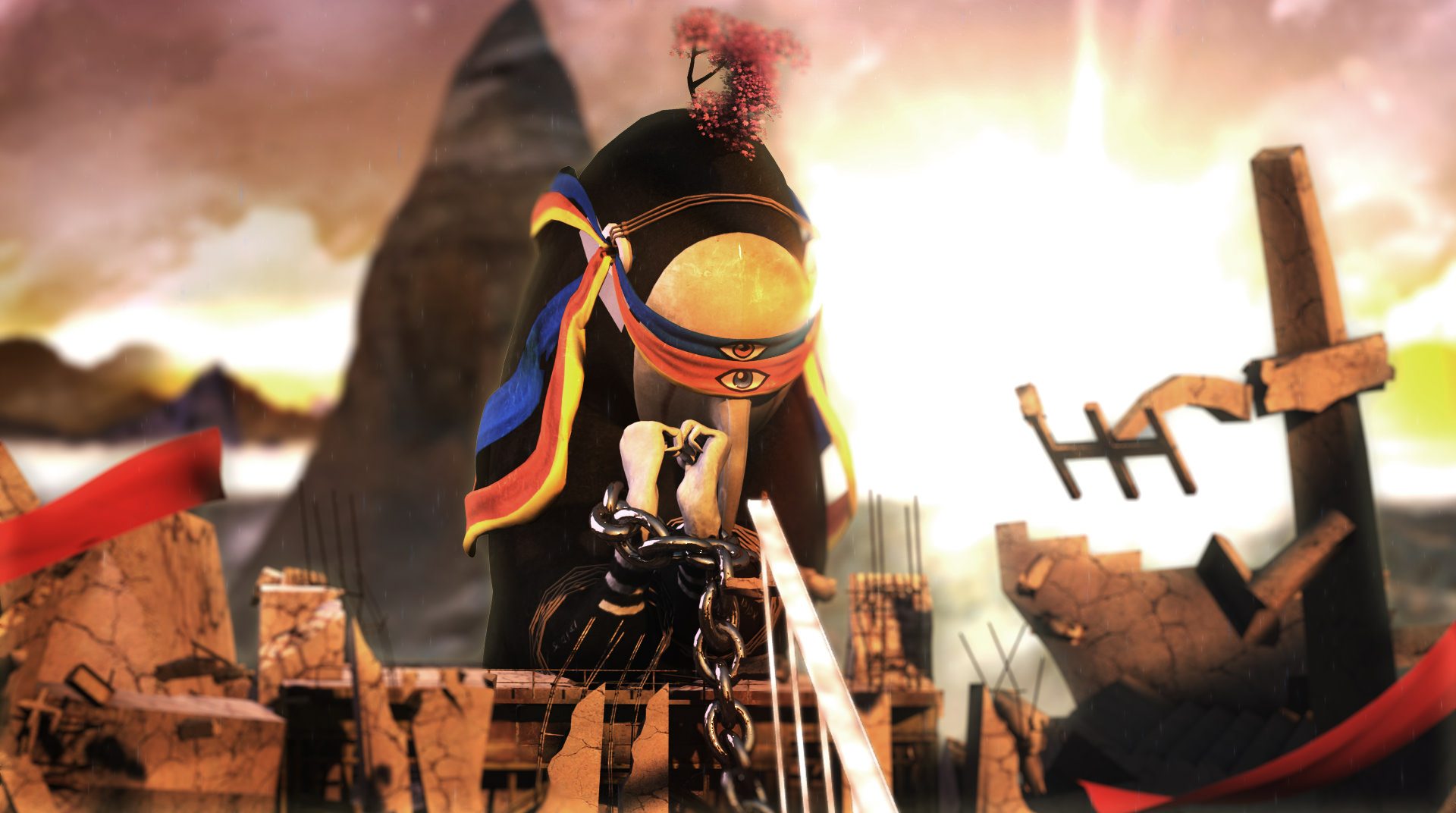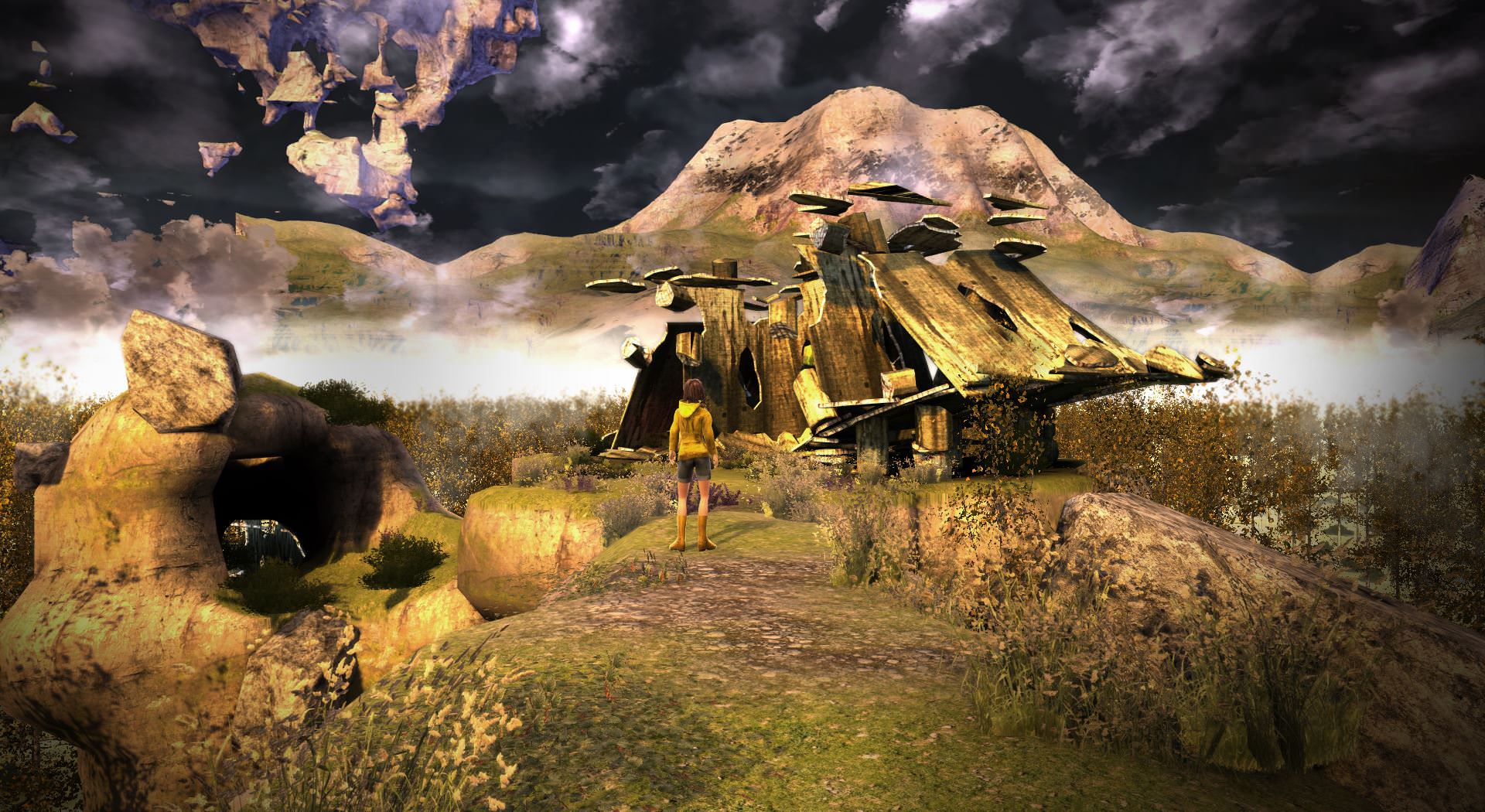Part exploration, part side-scroller, and all musical, the upcoming Distortions from Brazilian indie dev Among Giants is making noise as a big sleeper gem as it approaches release on Steam this week. In preparation for the game’s release, we wanted to delve into this new music-based project that conceptually blends new hybrid mechanics into a beautiful, poetic game that uses music as the connective tissue between narrative, environment, and language.
We had the chance to speak with Among Giants CEO Thiago Girello about Distortions, the inspirations behind the blend, and what range of harmonic (or dissonant) experiences he hopes players find within.
GameSkinny (GS): Eight years ago, what was the very first spark that drew you to blend music so strongly with narrative and gameplay?
Thiago Girello (TG):This is a great question! Music was a key part of every single development task in Distortions — and it goes well beyond gameplay mechanics. I used to play in a band. It was incredibly fun, and we had a unique musical style. Sometimes we’d come up with really slow-paced songs — beautiful and contemplative — and sometimes we’d play super heavy with a lot of distortion. With this game, we wanted to translate the feeling of playing in a band to a game about the creative process — and more importantly, the rhythm we enjoy when making and listening to music. So when we started to think about Distortion’s main gameplay mechanic, we came up with music and rhythm. And from that initial seed, narrative, level design, and gameplay naturally followed.
GS: Why a violin? What about that particular instrument inspired the game design based around these musical mechanics?
TG: We chose the violin because it’s an instrument that can play a slow, beautiful melody — or something really intense, almost heavy-metal like … which was really useful when setting the pace for the game. Also, the violin is a great instrument for solos! Another neat touch is that it makes the protagonist’s silhouette even more intriguing. A violin gives you freedom. While most songs involve holding notes, you can also play like Guitar Hero — pressing keys like a madman. You can come up with some unique music if you play notes together.
With this game, we wanted to translate the feeling of playing in a band to a game about the creative process — and more importantly, the rhythm we enjoy when making and listening to music.
GS: Just as Distortions blends music, narrative, and gameplay, it also blends very linear play with open-world mechanics. How did your initial designs approach the idea of an open world alongside other styles of play?
TG: Other types of media are concerned about pace and rhythm — but games usually aren’t. Movies and books try to keep the audience engaged with rising suspense, drama, comedy, and so on. Games, on the other hand, usually present the player with main gameplay mechanic — and then keep hammering it until the end of the game! The only difference is that the same actions keep getting harder and harder. In order to fix this, we came up with a more nuanced gameplay mechanic where we changed things up based on rhythm. Music is the origin point, and everything comes out of it like branches on a tree. For example, if the rhythm sort of demands a slow and contemplative moment (like the music we used to play in the band), we switch to a first-person perspective. If we’re dealing with action or tension, we go to a side-scrolling perspective so that players can see who’s chasing them. If the music is all about solitude, Distortions becomes more of an open-world, Metroidvania-style game — and so on. We still have a core gameplay mechanic (third-person exploration with the violin), but we try to change things up from time to time so that the game can have a more organic pace.
GS: How did you hone the game into a singular experience with all of these very different aspects?
TG: At Among Giants, we all have different backgrounds, such as film and literature. As you can imagine, some serious discipline and teamwork are required in order for everyone to work together! For example, the game’s production design is similar to what would be done for a feature film. It’s fascinating to watch someone get a taste of Distortions by playing part of a pre-release build at an industry event. We teach the game’s logic and overall concept through cadence and repetition. Players initially don´t know what to expect because everything is so different from other games they have played before. But they start to really get into it and have a great time. We love seeing that process take place.
GS: In a game called Distortions, how do themes like harmony and dissonance run through the player’s own experience?
TG: What we do is invite players to use something we call “blank spaces,” which allows them to “fill in the blanks” with their own experiences. For example, we never talk about what happened to the main character or about her ultimate reality. We are always working with words like “memory” and “expectations” — a type of subjective layer, and a subtext for the game as a whole. The beauty of that approach is that it allows players to put their own reality and relationships in the game, so to speak. Also, all the characters use masks. You can put any face you choose behind them, which is priceless on its own. And no one has names, either: The main character is simply called the Girl, and the monster is the Monster. There are other characters, sure — including the writer and the masked ones; players can name them if they feel a need to do so. We’ve added “blank spaces” such as these throughout the game as much as possible.
GS: You worked with three different bands, one local to Brazil and two from the U.S., to create the unique soundtrack for the game. Describe the challenge of designing a game so closely tied to musical mechanics with so much highly creative input from separate teams.
TG: Before we even started working on Distortions, we spent a huge amount of time researching the music and overall feel we wanted for the game. After that was done, we got in touch with certain bands to see if we could use their music — not as a finished product but a joint, collaborative effort. It was a triple-pronged approach: There was original music that we composed, another musician in São Paulo, and a studio in Rio de Janeiro. We needed this variety because the main character has difficulty expressing herself through words — so she relies on music instead. For example, in the beginning, the Girl doesn’t have her own voice, so we use the tracks to make up for that. Toward the middle of the game and near the end, the Girl learns to play music by ear and improvise finally finding her own, unique voice.
You can find Distortions on Steam and the Windows Store on March 1, 2018.









Published: Feb 27, 2018 01:39 pm